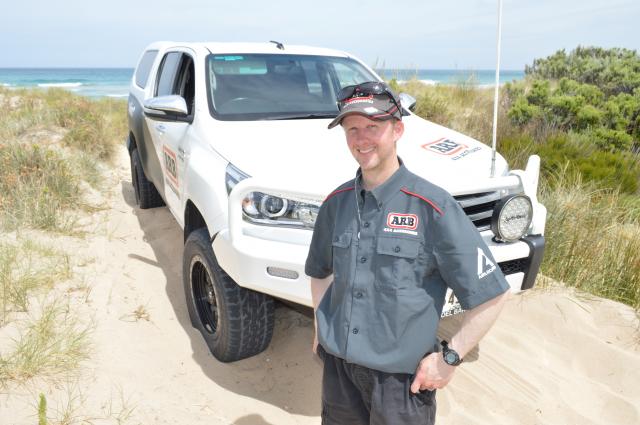By Peter Gandolfi
A DRIVE through sand dunes and along a beach can be a lot of fun but it can also be perilous, ending in disaster for some.
Cars have rolled and even been washed out to sea.
Four-wheel-drive enthusiast and team member at the Mount Gambier Off-Road Centre, Darren Goetze said people need to be well prepared before heading out into the sand dunes.
“One of the first things to do is drop your tyre pressures – a good starting point is about 18 psi,” Darren said.
“People often think letting your tyres down only widens the tyre footprint, but it actually lengthens the tyre more than widens.”
He said if you’re really stuck you could go lower but as soon as you are out of a bog get them back to 18 psi and then back to normal road pressure when you exit the dunes and return to road conditions as higher speeds can heat up the tyre too much and result in a blowout or rolling a tyre off its rim.
Darren said the age-old argument on whether chunky or smooth tyres are better on sand is irrelevant today.
“Tyre pressures are what matters,” he said adding that modern tyres work well on sand whatever their tread.
Another good rule to follow is to always have a friend nearby when hitting the sand dunes or beach.
“Go with other people particularly if you are new to it – get involved with a local four-wheel-drive club or go with some friends or family so at least if you get in trouble, you have another vehicle to help you get out,” said Darren.
If you have ever tried pushing a four-wheel-drive out of a bog – forget it – that’s where good recovery gear comes into play.
“At a bare minimum, a couple of rated shackles to attach your vehicle to a recovery vehicle safely, and a good snatch strap… and don’t forget a long-handled shovel,” Darren said.
“For sand work these are the three bare minimums.
“An extension strap or a second snatch strap can also come in handy because snatch straps are normally only about 10 metres long so having that extra length is useful in sand.
“Traction boards can be added to any recovery kit – they are very, very handy especially in sand.”
Darren said to expect the unexpected so bringing water and food is always a good idea.
It’s also wise to take any daily medication you may need.
Darren said while taking a mobile may be useful for calling for help, even Canunda National Park has phone black spots throughout it, so a UHF radio will add that little bit of security.
Looking after the environment is important and Darren recommends always sticking to the marked tracks.
“Stick to the tracks and the post markers, clean up after yourself and don’t drive on vegetation.”
Darren said be aware of other vehicles coming the opposite way – particularly motorbikes.
“That’s where a sand flag comes in handy so they can see you before the crest of a dune,” he said.
This brings up the topic of driving up a sand dune.
“Always drive straight up a dune, not on an angle.
“If you can’t make it over the dune, reverse straight back.
“Whatever you do, don’t try to turn around as your vehicle could roll.”
Darren recommends driving on remote beaches should not be done alone.
“Browns Bay, Long Beach at Robe or even the run from Southend to Beachport is worth the drive for someone new to beach driving,” Darren said.
“The beaches are open and you can pick your times to suit the tides.
“Down here the beaches are notorious – people have lost their cars down here,” he said.
“People have got stuck and haven’t been able to get it [their car] out before the high tide comes in – it ends up washed away – bye bye car.
“You really need to know what you’re doing, so if you are inexperienced just stay off the beaches because they can be very soft.”
Darren said our coastline is a four-wheel-drive destination that many locals take for granted.
“So many people visit the region to drive the sand dunes and beaches,” he said.
“Victorians are not allowed to drive on their beaches so many of them come to Canunda, Beachport and Robe during holidays.”
In summary Darren said: “Keep an ear out for your UHF radio, have a sand flag on your vehicle and have your basic recovery gear is a good start.”












